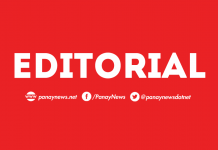
AS REPORTED by this paper over the weekend, residents of Iloilo’s remote islands battling heart disease face an uphill struggle marked by logistical, financial, and systemic healthcare gaps. Delayed medical attention, lack of resources, and the harsh choice between survival and healthcare are everyday realities for these island dwellers.
The case of s fisherman from Tabugon Island, Carles is particularly alarming. His bout with hypertension nearly cost him his life, primarily because of the distance to medical facilities and the high cost of medication. Similarly, a widow from Gigantes Island and a young woman from Buenavista, Carles struggle with access to regular treatment, resorting instead to self-management in the absence of proper medical monitoring. Their experiences mirror the precarious situation of many island residents who live with chronic conditions yet lack the necessary healthcare support.
Data from the Department of Health (DOH) Region 6 show that in 2019, 29,331 individuals sought consultations for hypertension, with thousands more suffering from complications that led to fatalities. By 2020, these numbers had surged, with 60,947 hypertensive patients screened. Despite efforts by the Carles Rural Health Unit (RHU) and the DOH’s Healthy Hearts Program, challenges such as unpredictable weather, transportation difficulties, and an insufficient supply of medicines continue to hinder progress.
The plight of these island residents reflects the uneven distribution of healthcare resources. In highly urbanized centers, access to cholesterol screening, maintenance medications, and specialists is relatively easy. In contrast, those in geographically isolated communities must endure long and often dangerous journeys just to get basic medical attention. The irregular RHU visits and limited stock of cardiac medicines force residents to either abandon treatment or find costly alternatives.
Healthcare should not be a privilege dictated by geography. A sustainable, long-term solution is required — one that addresses both immediate medical needs and the structural issues that perpetuate the disparity. More frequent medical missions, increased funding for rural health units, and strengthened community-based health education programs should be prioritized to bridge this divide.
The government must step up its efforts in improving rural healthcare infrastructure, ensuring that life-saving medications and essential medical services reach those who need them the most. But beyond addressing immediate medical needs, there must be a stronger push for preventive healthcare. As emphasized by health experts, heart disease is a long-term condition that develops over decades. Public health programs should focus on promoting healthy lifestyle choices, encouraging early screenings, and ensuring that people are educated on the risks of high cholesterol and hypertension.
For remote islands like those in Carles, accessible and well-funded health interventions could mean the difference between life and death.







